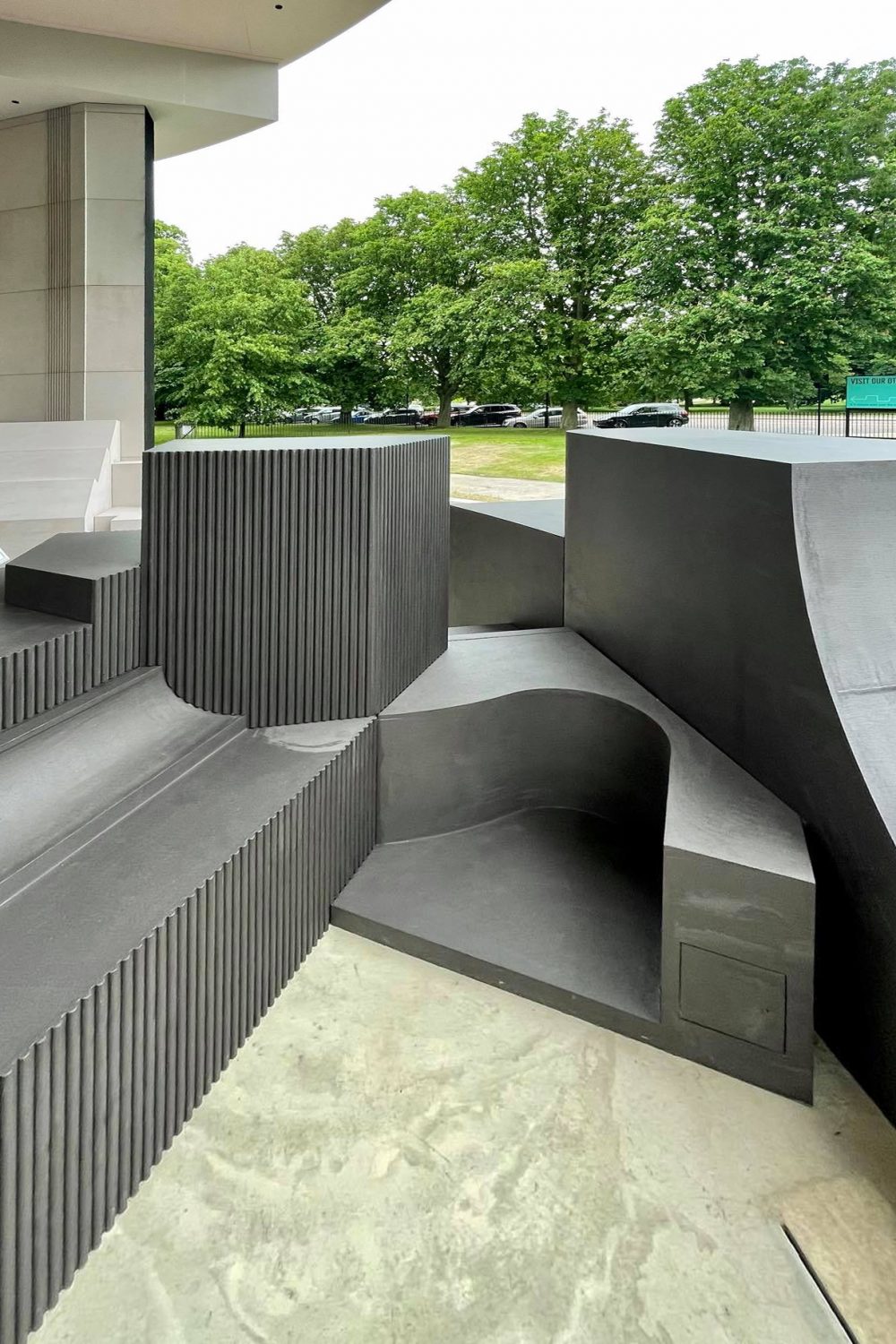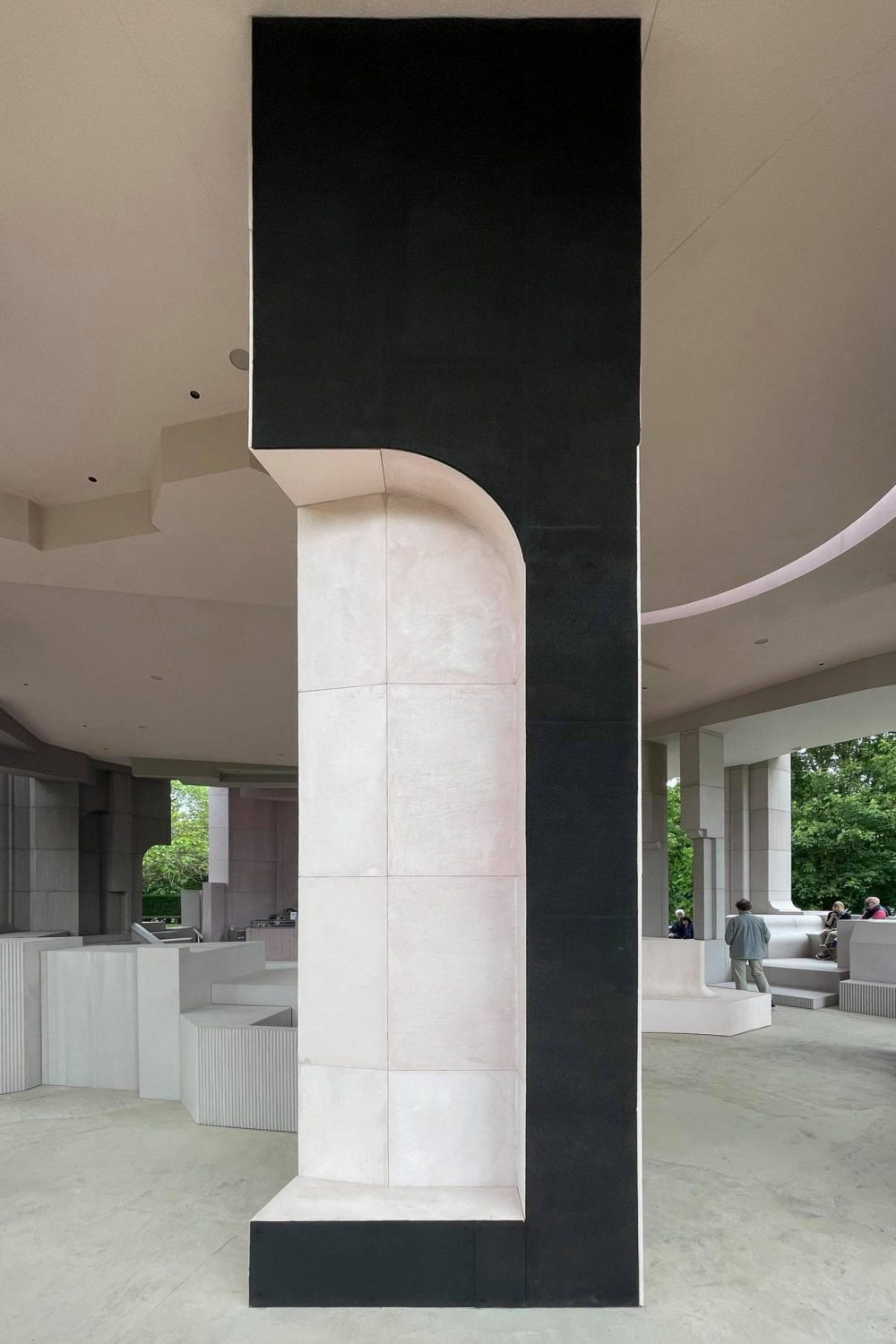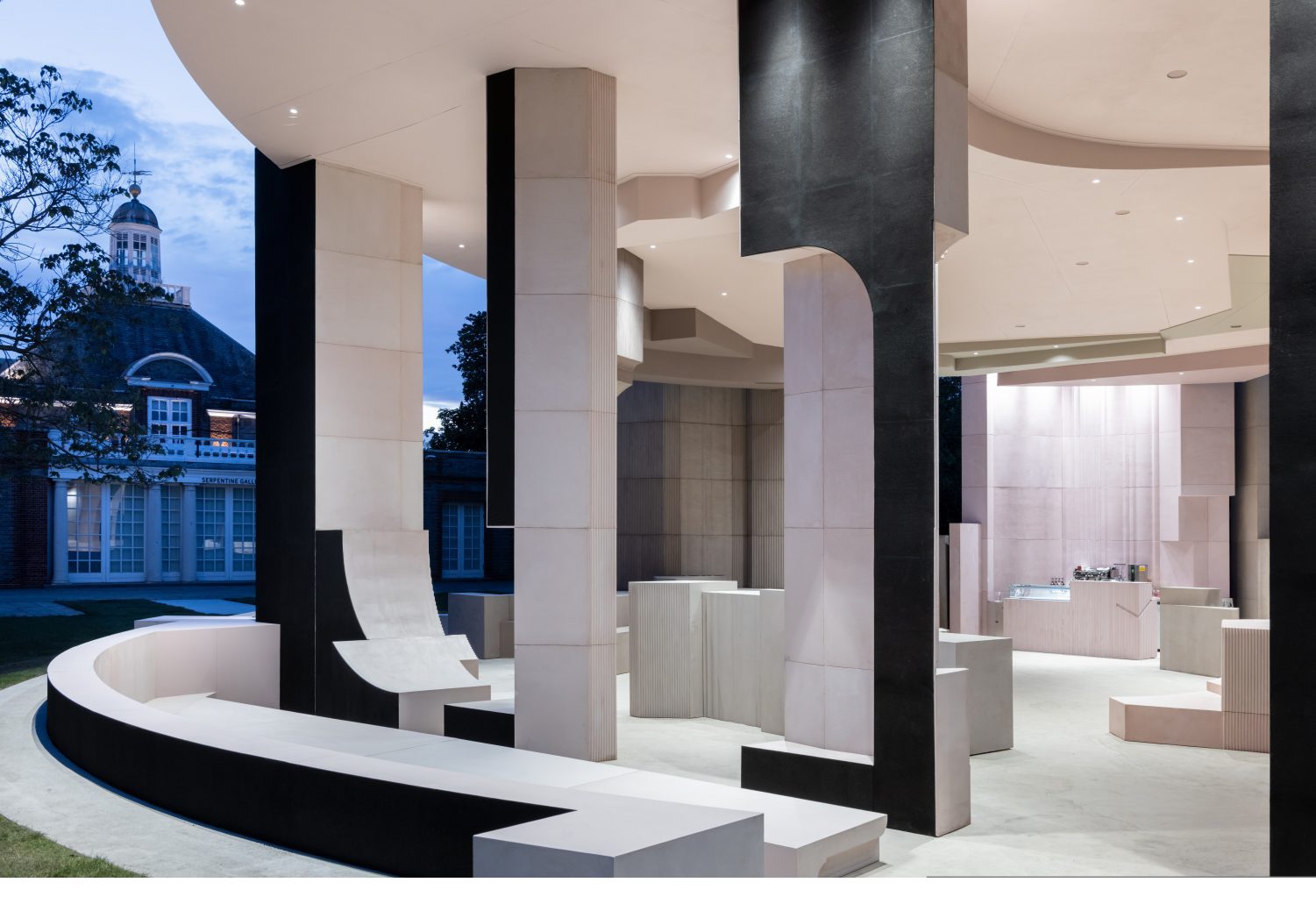SPEAKS WITH OUR SPECIAL REPORTERS THONGCHAI BUSARAPAN AND NUNE TAWEESRI WHO HAD THE SPECIAL OPPORTUNITY TO VISIT THIS YEAR ITERATION OF SERPENTINE PAVILION DESIGNED BY COUNTERSPACE UNDER THE CONCEPT OF ‘PAST AND PRESENT PLACES OF MEETING, ORGANIZING AND BELONGING ACROSS LONDON’
TEXT: PRATARN TEERATADA & THONGCHAI BUSRAPAN
PHOTO: THONGCHAI BUSRAPAN EXCEPT AS NOTED
(For Thai, press here)
After being postponed for one whole year due to COVID-19, Serpentine Pavilion has recently opened for the public on June 11th, 2021 with October 17th, 2021 being the designated closing date. And just like it always has been every summer, the site for the 2021’s pavilion is still Kensington Gardens in London’s city centre.

The 20th Serpentine Gallery is designed by Counterspace, a Johannesburg-based collaborative architectural studio led by the 30-year-old architect, Sumayya Vally. Vally is also the youngest architect to design the Serpentine’s globally renowned annual architectural commission. The design’s concept ‘past and present places of meeting, organizing and belonging across London,’ encompasses and interprets the cultural diversity of local communities in the metropolis into a work of architecture. It references sacred places where rituals and ceremonies take place, markets, restaurants, bookstores and local cultural institutions that connect to different immigrant communities located across the city of London.
The pavilion’s structure is built using a steel structure, clad with cork, and timber covered with micro-cement. The initial noticeable feature of the architecture is its structural simplicity with circular roof and a number of supporting columns. Situated inside the Kensington Gardens, the pavilion serves as a meeting point whose absence of walls and fences facilitates an unobstructed flow between the indoor space and outside surroundings. Looking into and out from the inside the pavilion, one can see a picturesque sight of growing trees. The perfectly shaded space and comforting presence of nature brings a sense of serenity, calmness and a pleasant thermal environment. After spending sometime inside, one would start to grasp the complexity hidden behind the design of the pavilion. Miscellaneous elements can be found in various parts of the structure, following Vally’s intention to convey the ‘place of meeting, organizing and belonging’ notion of the design. Especially its significance on the diasporas and local communities such as Brixton, Hoxton, Tower Hamlets, Edgeware Road, Barking, Dagenham, and Peckham, all diversified by different cultural identities.
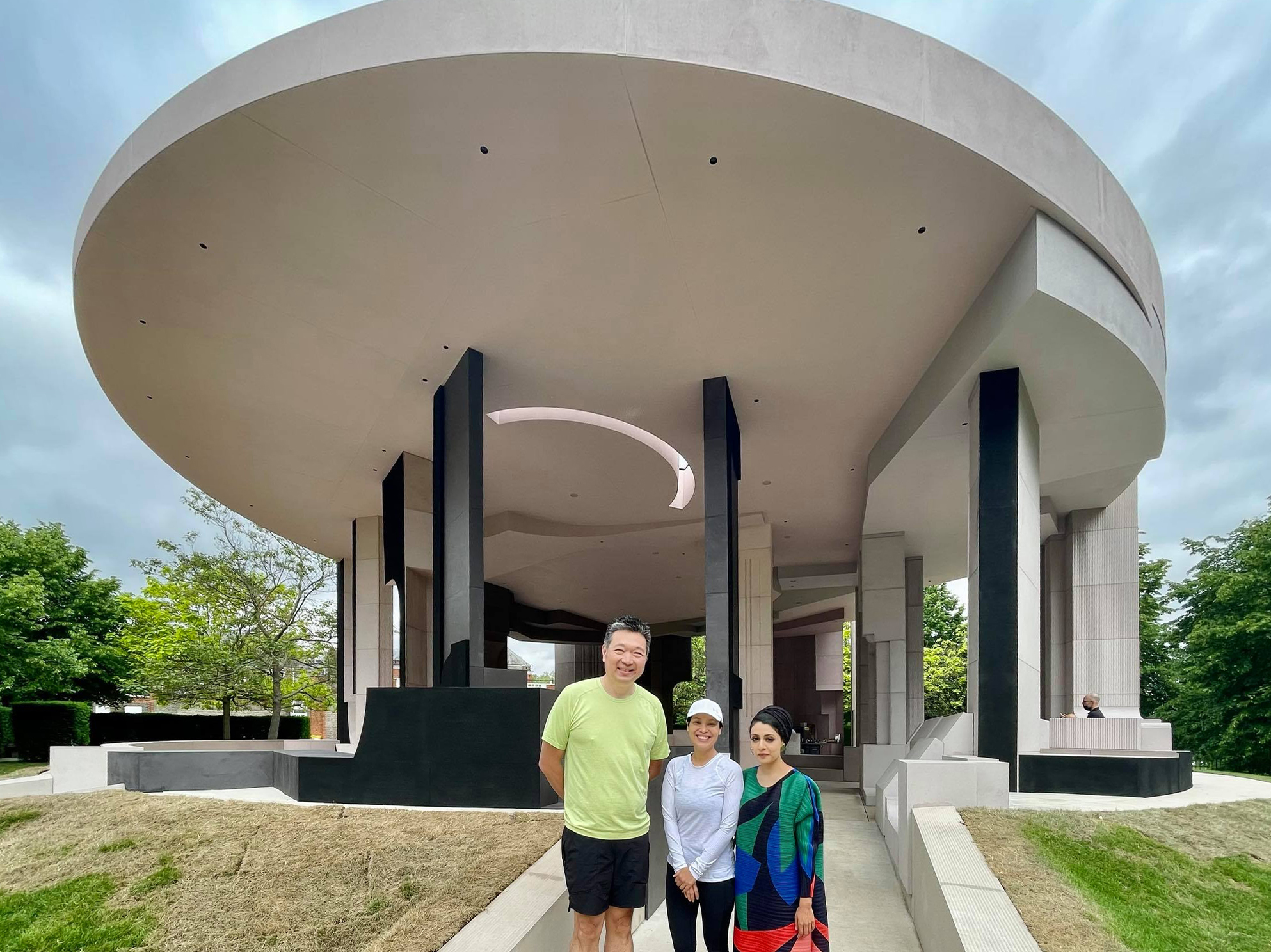
(left to right) Thongchai Busarapan, Nune Taweesri, and Sumayya Vally
art4d has been fortunate enough to be able to contact and talk with our special reporters, Thongchai Busarapan and Nune Taweesri, who had the opportunity to visit Serpentine Pavilion on the opening day. They also took some nice pictures of the pavilion including a snapshot with the project’s architect, Sumayya Vally.
art4d: London has just recovered from the pandemic, the lockdown and all the social distancing measures. Since the idea of the pavilion is about the meeting of Past and Present Places, which is essentially about being together, along with human interactions and communication, what has the feedback been like from the people there? Are they ready for the post-pandemic life?
Thongchai Busarapan: I have to tell you that post-pandemic London is seeing a lot of changes, especially in the way people are living. We both came to London when the lockdown was just starting ease off. We spoke with some of the people who were living in London during the lockdown and found out that the changes in their lifestyle were quite drastic. They had to stay home, didn’t go to work and the measures were a lot more serious than Thailand. People who worked in the restaurant and barber business told me that they barely worked last year. Luckily, people have been receiving pretty great support and compensation from the government so they were able to live through the lockdown. But there were a lot of shops and restaurants that had to be permanently closed down. When I arrived, the city was starting to really come back from the lockdown and the fact that it’s summer, I’ve seen people coming outside, living life and experiencing freedom that they didn’t get to have last year. On a day with good weather, you would see people filling up parks even though London isn’t exactly entirely COVID-19-free. But people still wear masks when they’re out. I think what Sumayya Vally did with this year’s Serpentine Pavilion is derived from her exploration into how the people of London have been longing for the life before the pandemic. The pavilion intends to be a place where people can gather and socialize again, and I saw that happen. People came to the pavilion to meet. They hung out the café, enjoying their summer in the middle of Kensington Gardens. The design itself is a reflection of different periods of London’s cultures and history, such as the city’s first appearance of Islamic architecture, and acceptance of black music. Parts of the pavilion are scattered in five other places across the city as well.

art4d: Could you share with the experience and feelings of being at the pavilion with us?
TB: We were there at ten o’clock in the morning, on the first day the pavilion was open for the public. We intended to leave the house early and jog there. When we arrived, we were the first people who entered the building. The design is in a neutral tone that blends in nicely with the green trees of the surroundings. We thought the material was stone at first, but learnt that it was actually cork and micro cement. The seats were also designed to be in different forms. The clash of curved and straight lines created a variety of unusual looking shapes and functionalities. At the center, there’s a circular space housing a café selling snacks and beverages, and people bought them and sat around the pavilion. I personally think that this pavilion, compared to the ones created in the previous years, is the type of space designed with a purpose to encourage social interactions rather than being a merely an architectural showpiece like we have seen from prior works. When we walked out, we ran into Vally who was also there the night before for the official opening. She was there to observe the work on the first day of public viewing. We had a chance to talk to the architect and she said that she wanted to see how people would feel and react to the work. She was quite excited to see how people would interact with the pavilion in real life.
art4d: What are your thoughts on how they scattered parts of the pavilion to different areas of the city, which is something that has never been done before?
TB: It’s an interesting idea to encourage all these local communities to experience the program by having these parts displayed in different areas of London. The thing is, for most people living in London, coming to the city center to the Kensington Gardens to see Serpentine Pavilion isn’t something they would normally do. Some people haven’t come to city center for years despite living in London, because they live and work in other parts of the city and they have no business coming here. So, having all these parts being displayed in different suburbs is a good approach to provoke and attract people’s interest in the project.
art4d: How has the pandemic affected London, particularly the creative aspect of it?
TB: This pandemic has changed the way people live in many ways. What the world has learned from this pandemic, especially the design industry, is the impact of creativity, which has been elevated significantly. Many are able to utilize technologies to master remote communication, and significantly overcome the obstacle that is the distance of physical space. We have been able to keep things going despite having collaborators working in entirely different countries or even continents. So, there are these massive connections of knowledge, experiences and sharing of technologies happening at such a fast pace, enabling many potential creative works to develop faster and reach even higher standards. The crisis has really brought both opportunities and obstacles.
art4d: What are your thoughts on Sumayya Vally as the youngest architect to ever design Serpentine Pavilion?
TB: I think Sumayya Vally hasn’t been recognized in the same level as other world-class architects and artists whom Serpentine invited to design its previous summer architectural program. Although people here are excited that she’s the youngest architect to ever design the Pavilion as well as refreshed by the difference in her background.
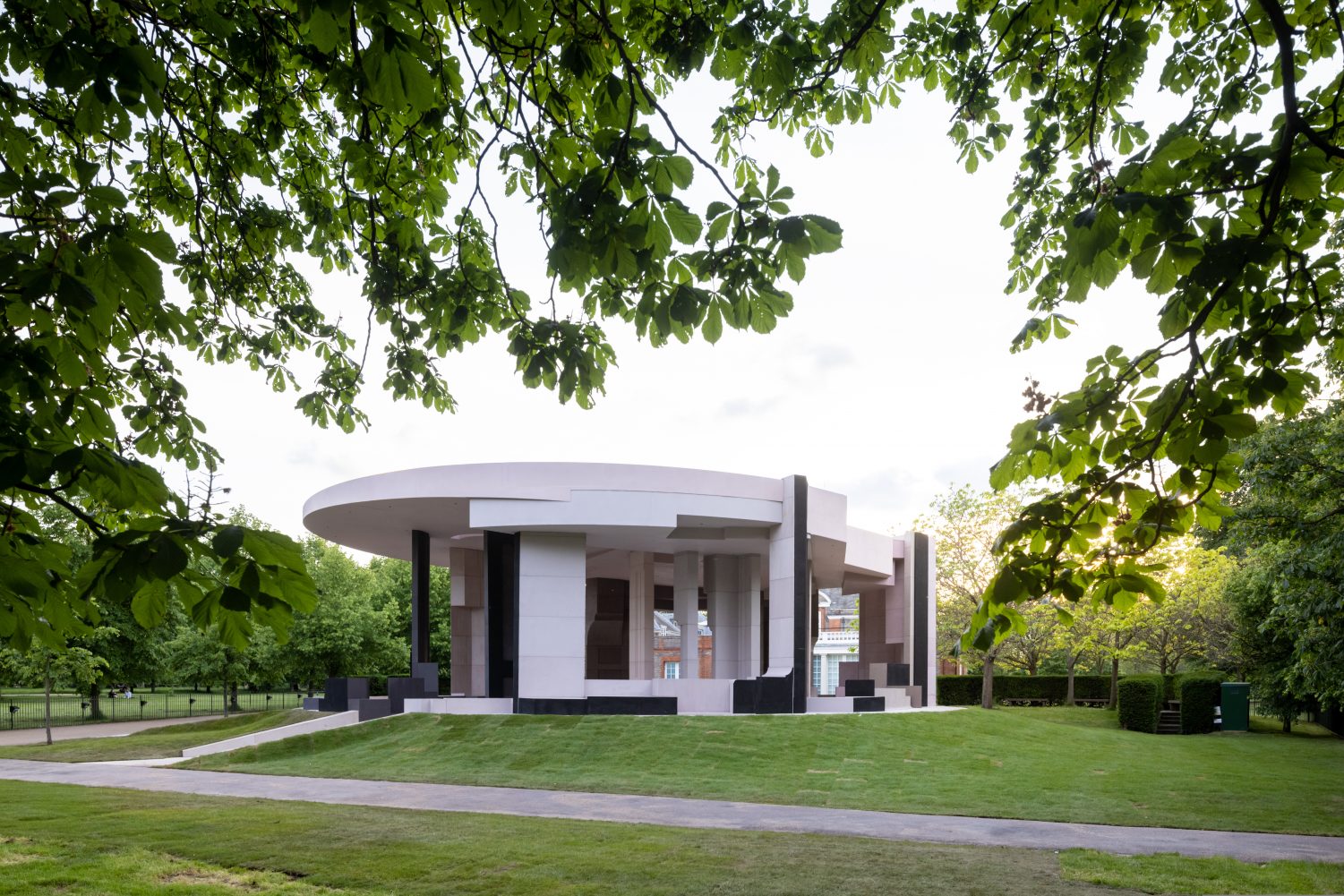
Serpentine Pavilion 2021 designed by Counterspace, Exterior View © Counterspace Photo: Iwan Baan

 Serpentine Pavilion 2021 designed by Counterspace, Exterior View © Counterspace Photo: Iwan Baan
Serpentine Pavilion 2021 designed by Counterspace, Exterior View © Counterspace Photo: Iwan Baan 